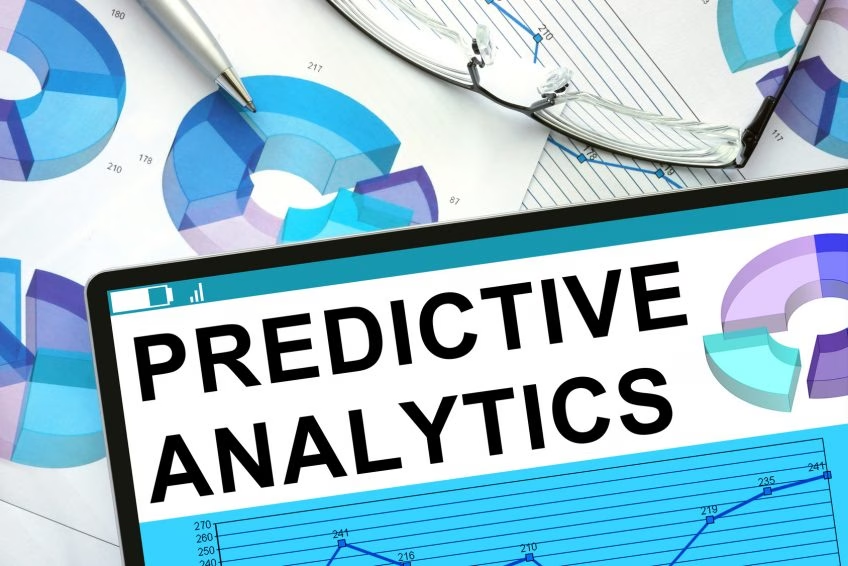
What is Predictive Analytics?
Wondering what predictive analytics is in simple words? After reading this article, you'll know the basics of predictive analytics and the stages of a predictive analysis process.
In this article
- Predictive Analytics: Definition
- Stages of a Predictive Analysis Process
- Frequently Asked Questions on Predictive Analytics
Predictive Analytics: Definition
Predictive analytics or predictive analysis is a branch of advanced data analytics. It helps businesses forecast future events by examining historical data through predictive models.
Data trends and actionable insights gained through predictive analytics tools assist business leaders in making impactful business decisions.

Get a complimentary discovery call and a free ballpark estimate for your project
Trusted by 100x of startups and companies like
Businesses have big data available today in the form of sales history, customers’ information, customers’ reviews, complaints, etc. All this data is useless if not properly analyzed and converted to something meaningful.
The predictive analytics models make the process of data analysis for future predictions easier through the use of statistical techniques, data mining, and artificial intelligence techniques.
Artificial neural networks and deep neural networks are trained on big data using machine learning algorithms to find trends and patterns in the business data.
Different machine learning algorithms such as multiple regression, logistic regression, support vector machines, random forest, linear and nonlinear regression, etc. help to analyze data.
Businesses are able to find opportunities and risks such as potential customers’ demographics, future best-selling products, etc.
The market for predictive analytics software is projected to grow to 41.52 billion U.S. dollars by 2028. Given the widespread adoption of such solutions by businesses, chances are you'll want to step in this lucrative market with your own predictive analytics software.
Stages of a Predictive Analysis Process
The predictive analysis process consists of the following steps:
1,200 top developers
us since 2016
1. Project Definition
As a software project manager, you will define the business objectives and the scope of the data analytics process. You will decide on the metrics to ensure better monitoring and reporting of data analysis methods. Data sets to be used in predictive analytics are also decided in this stage.
2. Data Collection
Data mining is performed to collect the relevant data from multiple sources defined at the previous stage. Structured data in the form of tables, etc. can be readily used for predictive analysis. However, the majority of the data businesses have today like customer notes, social media posts, etc. are unstructured.
3. Data Analysis
This stage makes unstructured data suitable for data analysis. Data mining techniques are used to extract the required information from such unstructured data. This clean and formatted data is then used, as an input, to the machine learning and data analysis models.
4. Statistical Modeling
Statistical methods are used to understand the data extracted at the data analysis stage. Assumptions are made and validated against the hypothesis. Predictive modeling is done to develop systems that can predict future events based upon the learning done using machine learning or statistical algorithms.
5. Project Deployment
A predictive analysis model is then deployed for business processes to learn from real-time data. Model deployment is a complex process. Deployment personnel ensures that a model is integrated seamlessly with the existing business applications.
6. Monitoring and Analysis
The performance of the predictive analysis model indicates if it is created and deployed according to the set requirements. Automating reporting system facilitates the process by providing information on the model’s performance on a daily and weekly basis.
Conclusion
Predictive analytics is helping businesses in multiple ways, from customer relationship management, fraud detection, risk management to marketing strategies and underwriting processes. An elaborate predictive analytics process can help you save resources and increase revenues.
Read our guide on how to implement predictive analytics in your business for more details.
If you are looking for data scientists and software engineers to implement predictive analytics software, DevTeam.Space can help you. We have software developers experienced in the latest technologies to develop market-competitive software solutions.
Get in touch via this quick form describing your initial predictive analysis requirements. One of our technical managers will contact you to discuss further steps and answer your questions.
Frequently Asked Questions on Predictive Analytics
Predictive analytics is an advanced analytics procedure to analyze historical and transactional data and forecasts future outcomes depending on the data trends and patterns through a predictive model.
Predictive analysis can help businesses with efficient decision-making that affects the long-term growth and revenue of a business. Some predictive analytics applications include better customer service, improved marketing campaigns, better supply chain management, etc.
Apart from exceptional software development skills, different data handling skills are required like; data management, data filtering, data storage, data analytics, etc.


